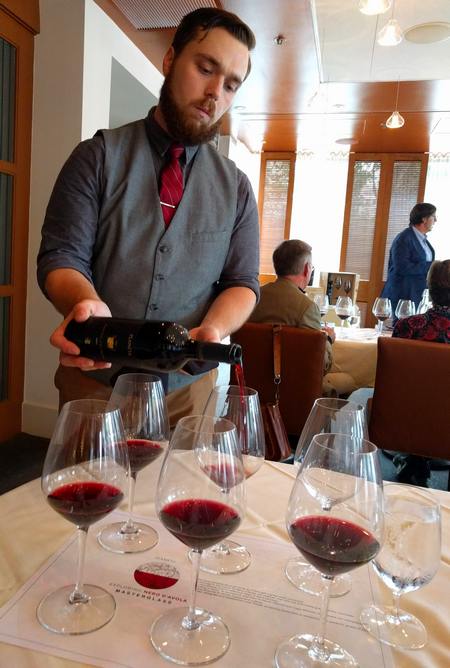“Nero d’Avola is the most important grape in Sicilian wine-making,” announced Alessio Planeta at the outset of a two-hour seminar on the subject. Planeta has all the bona fides to make that claim. He’s the nephew of Diego Planeta, who pioneered quality winemaking with the Settesoli cooperative in Menfi and co-founded Planeta winery (planeta.it/en/) in Sambuca. Alessio and his cousin Francesca now run Planeta, one of the biggest exporters of Sicilian table wine to the U.S.
Nero d’Avola is the noblest of the many native Sicilian red grapes. With abundant warmth, sunlight, and dry conditions at harvest, it reaches peak ripeness in Sicily with rounded phenols and a sugar of about 22 brix. (It ferments dry to 13.5% alcohol.)
Historically, Sicilian red wines were known more by estate than grape (if they were known at all). Although Nero d’Avola first appears in written records from 1696, it is now the seventh most planted red grape in Italy—almost all of it in Sicily. What makes the grape so intriguing is that it assumes a different character in each region of the island. Sicily now requires Nero d’Avola wines to carry either a DOC or DOCG designation. In other words, Nero d’Avola from one region can’t be blended with Nero d’Avola from another. To show this versatility, Planeta led us through a tasting of four styles from his family’s estates.
Cheerful Cerasuolo and herbaceous Mamertino
 We began by tasting Cerasuolo di Vittoria DOCG and the Classico version of the same wine, which Planeta calls Dorilli, after the estate. Typically, wines of this southeastern region are a blend of Nero d’Avola and the bright, strawberry scented Frappato grape. The “Cerasuolo” name comes from Sicilian dialect for cherry, and the wines do show pronounced cherry and strawberry notes. Alessio Planeta characterizes the basic Cerasuolo as “good for pizza.”
We began by tasting Cerasuolo di Vittoria DOCG and the Classico version of the same wine, which Planeta calls Dorilli, after the estate. Typically, wines of this southeastern region are a blend of Nero d’Avola and the bright, strawberry scented Frappato grape. The “Cerasuolo” name comes from Sicilian dialect for cherry, and the wines do show pronounced cherry and strawberry notes. Alessio Planeta characterizes the basic Cerasuolo as “good for pizza.”
The Dorilli, on the other hand, has deeper flavor and a supple elegance. In addition to the characteristic leather and black plum flavors of Nero d’Avola, the wine shows notes of orange peel and red fruits. Twelve months in year-old barrique gives the finished Dorilli a touch of tannin without picking up vanillin from the wood.
The Mamertino DOC, located in the northeast corner of Sicily on the Capo Milazzo, is also home to the indigenous Nocera grape. Planeta blends 70 percent Nero d’Avola to 30 percent Nocera for this truly unusual red. It shows notes of tamarind and citrus with the red fruit, along with a back note of anise. It would be spectacular with wild game.
Santa Cecilia bids to show Nero d’Avola’s potential
Planeta’s flagship Nero d’Avola wine is Santa Cecilia Noto DOC. The Noto region is likely the ancestral homeland of the grape. Located in far southern Italy, the region has chalky soils and extreme heat through the growing season. It also boasts some Nero d’Avola vines so old that no one knows when they were planted. The wine in current release (2013) is a steal at $30. Sour cherry and black plum dominate the palate, while the aftertaste hints at the carob fruits grown in the same area. It’s a perfect wine for lamb or highly seasoned sausages. To show how the wine ages, Planeta also poured the 2007 and 2005 vintages. The 2007 was rich and plush, while the 2005 was especially interesting. Thirteen years after harvest, it has a complex balsamic nose. In the mouth, it is a large and generous wine relieved of its younger fruitiness. That suggests that buying the current release and laying it down a few years would be a wise investment.

